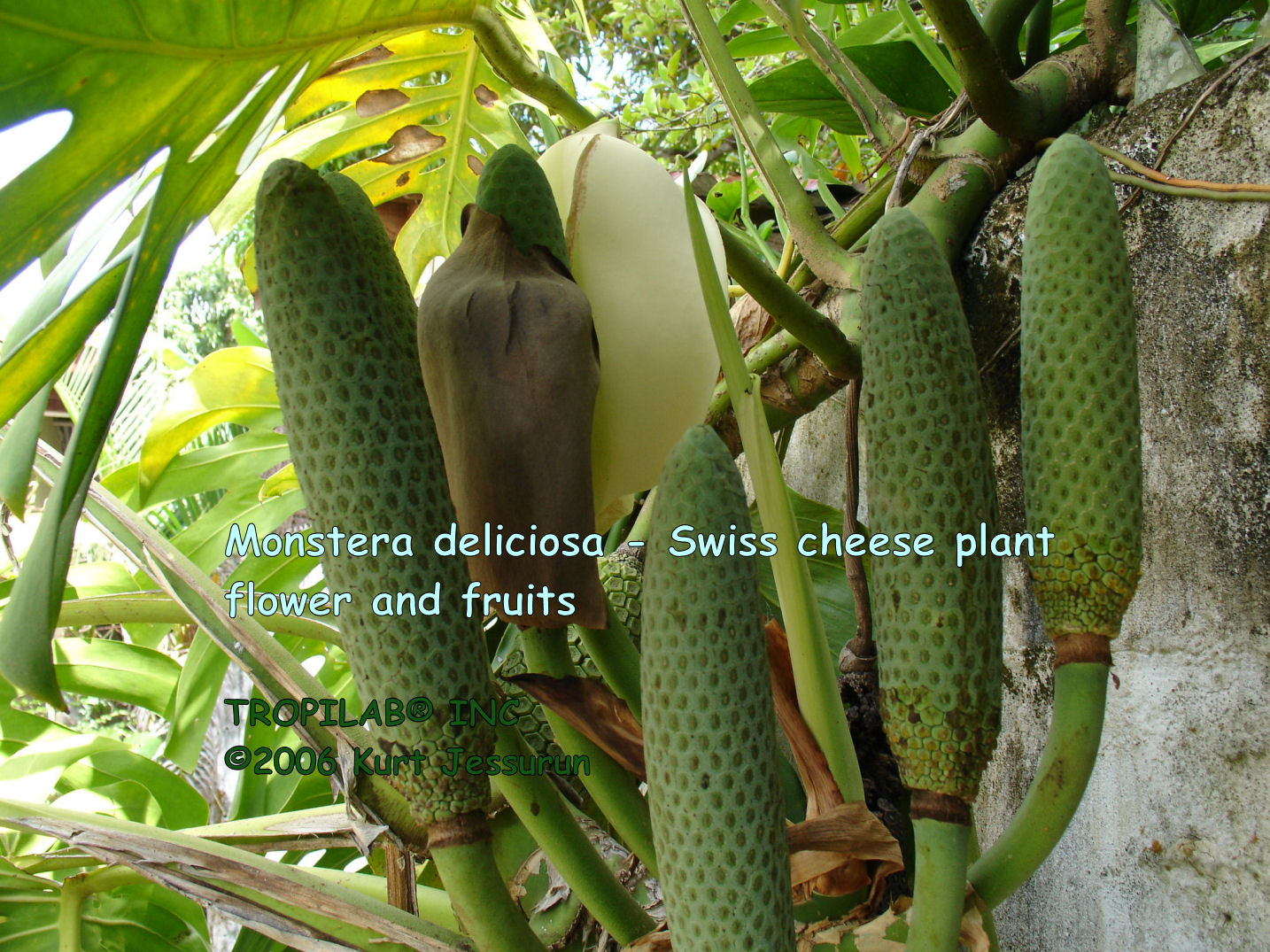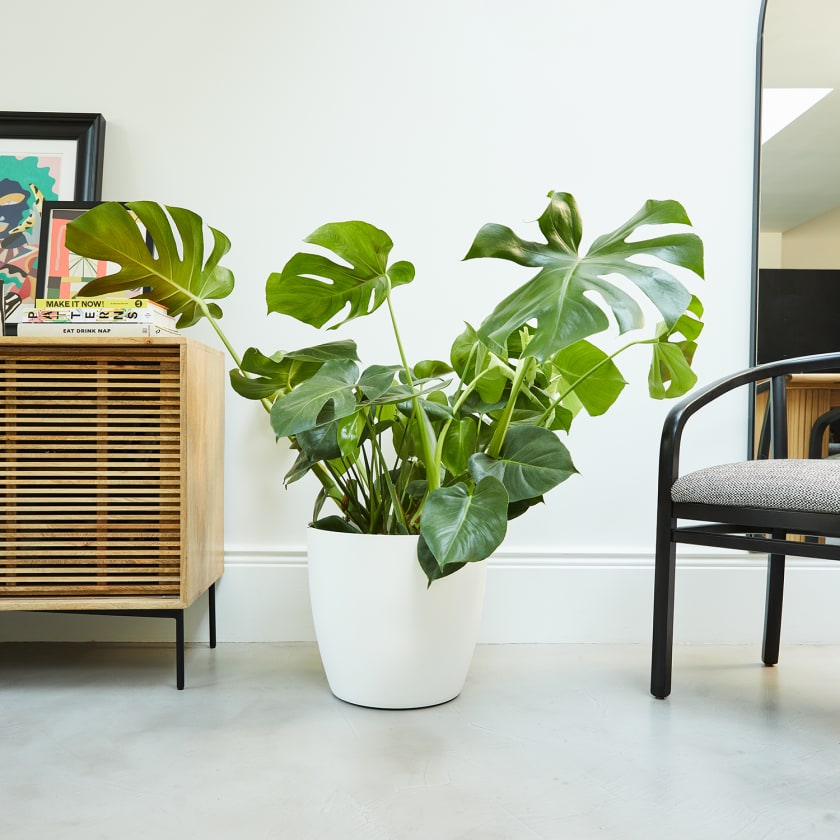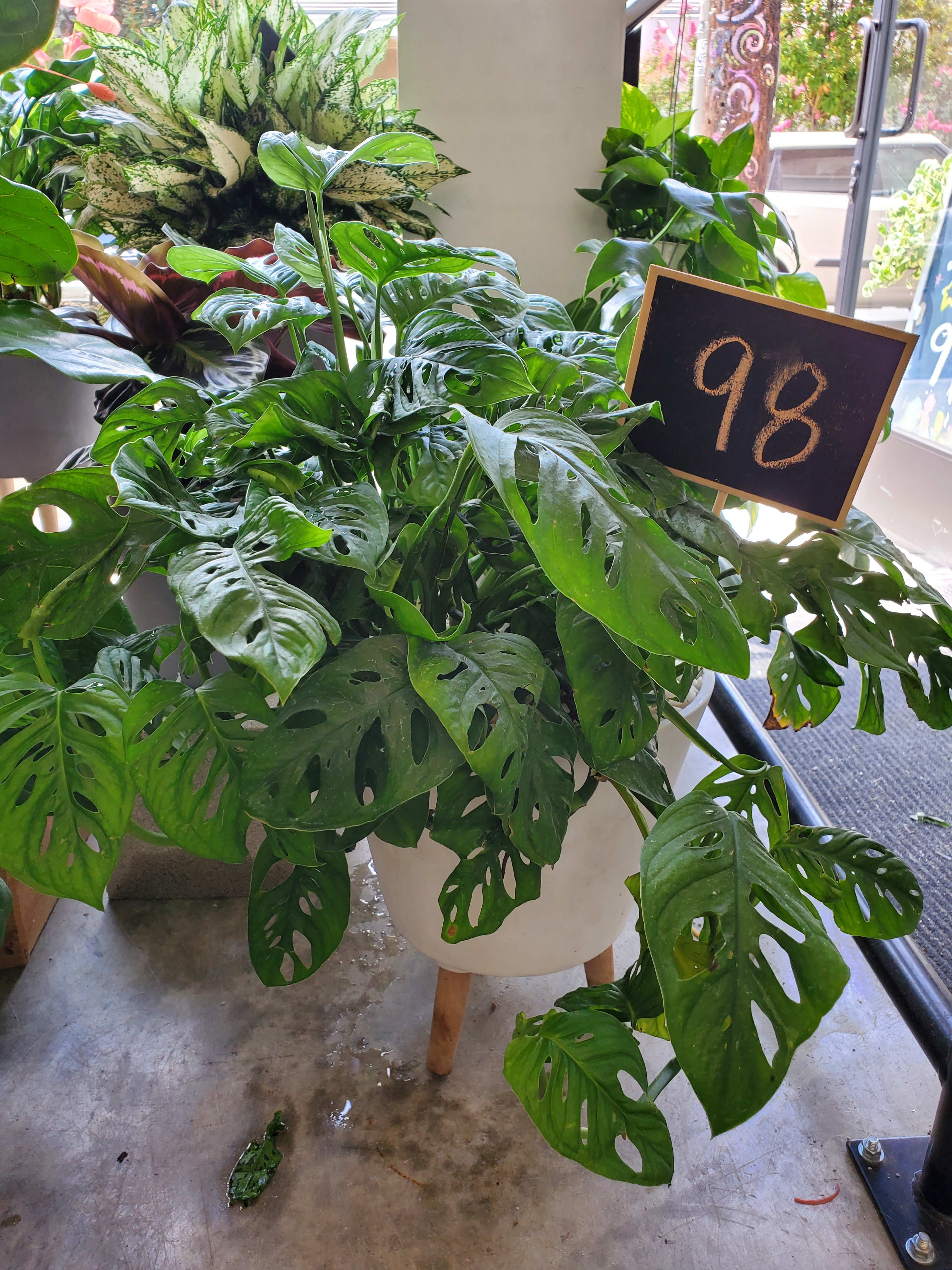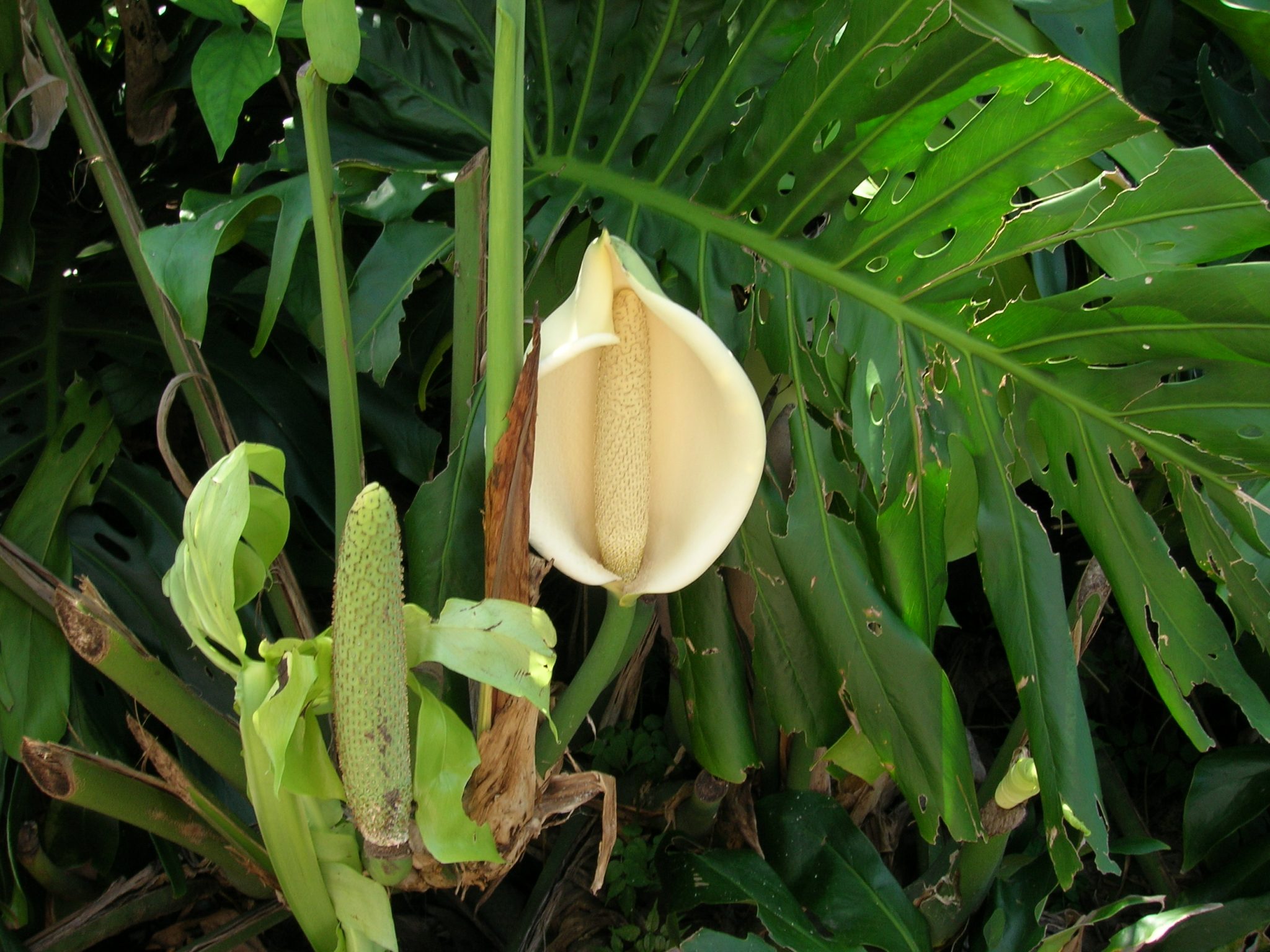Monstera Deliciosa (Swiss Cheese Plant) › Anything Grows

Rudi Louis Taylor-Bragge, a horticulturalist and plant shop owner, says the deliciosa's fruit "kind of looks like a straight banana". When ripe, the fruit "is delicious," Rudi says.
Monstera Deliciosa Cheese Plant Buy it now at Feels Like Home

Monstera deliciosa. 4. How to Eat Monstera deliciosa Fruit. To eat Monstera deliciosa, you have to take off its scales. From the outside, the scales are hard but the inside is soft. The texture is a mix between a citrus fruit and a banana. The flesh is white. You then take off the soft, inner white flesh using a scoop.
MONSTERA DELICIOSA SWISS CHEESE PLANT.

by Daniel. Monstera deliciosa is also called Swiss cheese plant, delicious monster, fruit salad plant, windowleaf, or simply cheese plant. It got its name because of the typical holes in its leaves. the plant is one of the most popular houseplants. Its imposing size, as well as the huge, glossy leaves, explain the popularity of the vine.
How To Care For a Swiss Cheese Plant (Monstera deliciosa) BBC Gardeners World Magazine

The species name, deliciosa, is in reference to the tasty, edible fruit that the plant produces. Some common names for Monstera deliciosa are swiss cheese plant, mexican breadfruit plant, and even fruit salad plant because of the delicious flavor of its fruit.
Monstera deliciosa, Philodendron pertusum, Swiss Cheese Plant, Fruit Salad Plant, Ceriman

Monstera deliciosa is a fruit that should come with an instruction manual. Unripe fruits are chock full of oxalic acid, a substance that is used to bleach wood and clean rust off metal. Those who.
Monstera deliciosa Swiss Cheese Plant Moss Pole Monstera deliciosa, Plants, Floor plants

Outdoor Monstera's fertilizer needs are relatively low. After planting, apply 1/4 lbs (113 g) of a complete dry fertilizer mix containing 20% to 30% nitrogen from organic sources. Nitrogen, phosphate, potash, and magnesium are components of a complete mix. For the first year, apply fertilizer every eight weeks.
Swiss Cheese Plant Monstera Deliciosa Fruit Salad Plant Patch

Insert a single seed into the mix half an inch deep. Moisten the soil and keep it moist, like a well wrung-out sponge. Place the container in a spot with lots of bright, indirect light. In two to three weeks, a little green stem should poke out of the soil. This will eventually unfurl into a leaf.
Swiss cheese plant in Los Angeles, CA Floral Art By Mia

How to Pot Swiss Cheese Plant. Fill the bottom of your pot with potting soil, taking up approximately one-third of the pot. Place a stake in the pot for the stem to climb onto. Put the roots in.
Monstera deliciosa eating the dangerous Monster Fruit or Swiss Cheese Plant YouTube

A Monstera may bloom and fruit at the same time due to the lengthy period of time the plant takes to bring an inflorescence to a mature fruit. This means there will be ripening fruit, immature fruit and unopened inflorescences appearing concurrently on the same plant. Monstera fruit takes 12-14 months to ripen.
The Swiss Cheese Plant More Than Its Looks HubPages

Here are the main care requirements for growing a Monstera deliciosa : Requires warmth and humidity; can plant outdoors in USDA zones 10 through 12. Prefers partial sun or dappled light. Needs acidic or neutral, peat-based, well-draining soil. Use a pot with ample drainage holes and water regularly.
Swiss cheese plant — Plants Patch Open Plan Living And Dining, Narrow Living Room, Living Room

Cheese Plant Overview. Monstera deliciosa is native to Mexico and Central America (countries such as Panama, Guatemala and Costa Rica). In these countries, it grows in tropical rainforests, mid-mountainous regions and lowland areas. The Swiss cheese plant is a liana, (a vine-like plant) that can climb to a height of 20 meters.
How to Grow and Care for a Swiss Cheese Plant
:strip_icc()/swiss-cheese-plant-monstera-adansonii-care-db7a5055bb604bb18de8ec5eab610bcb.jpg)
Sunlight Conditions: Give your Monstera plenty of moderate to bright indirect light. Avoid direct sunlight because the leaves will burn. If your window gets lots of direct sunlight, pull the plant back a bit or diffuse the light with a sheer curtain. It prefers rooms on the average or warm side, about 65 to 85 degrees.
Swiss Cheese Plant Monstera Deliciosa Fruit Salad Plant Indoor Plant Delivered Patch

The Spruce / Cara Cormack. Like its cousin Monstera deliciosa (also sometimes referred to as the Swiss cheese plant), Monstera adansonii has a fast growth rate and a vining habit. Although the Swiss cheese plant can reach mature heights of 10 to 13 feet tall when grown outside, it will tend to remain at a more manageable size (between 3 and 8 feet tall) when grown in a container indoors.
Monstera deliciosa (Swiss Cheese Plant) Large Kew Gardener

Botanical Name: Monstera deliciosa. Common Name: Swiss cheese plant, Fruit salad plant, Monstera fruit, Mexican breadfruit. Family: Araceae. Plant Type: Evergreen perennial Hardiness Zones: 10 - 12 (USDA) Sun Exposure: Partial shade Soil Type: Well-drained Soil pH: 5.5 - 7.0 Native Area: Central America, Southern Mexico, Panama, Costa Rica, Guatemala What is Monstera Deliciosa Fruit?
Swiss Cheese Plant Grows Fruit?! Varnish + Vine

The Monstera plant is known for its distinctive heart-shaped leaves and edible fruit. The leaves of the mature Monstera plant develop large, natural holes, or fenestrations, that give them a unique, tropical appearance. The fruit of the Monstera is a type of berry commonly referred to as a "Monstera deliciosa fruit" or "Swiss cheese fruit."
Swiss Cheese Vine (Monstera deliciosa) Richard Lyons Nursery, Inc.

Tons of common names exist for this plant. Fruit salad plant or fruit salad tree, Swiss cheese plant, monstereo… there's just bunches of different names. It's been referred to as the Mexican breadfruit because it can rarely produce a fruit. Another species, Monstera adansonii is sometimes called the Swiss cheese plant.
.

